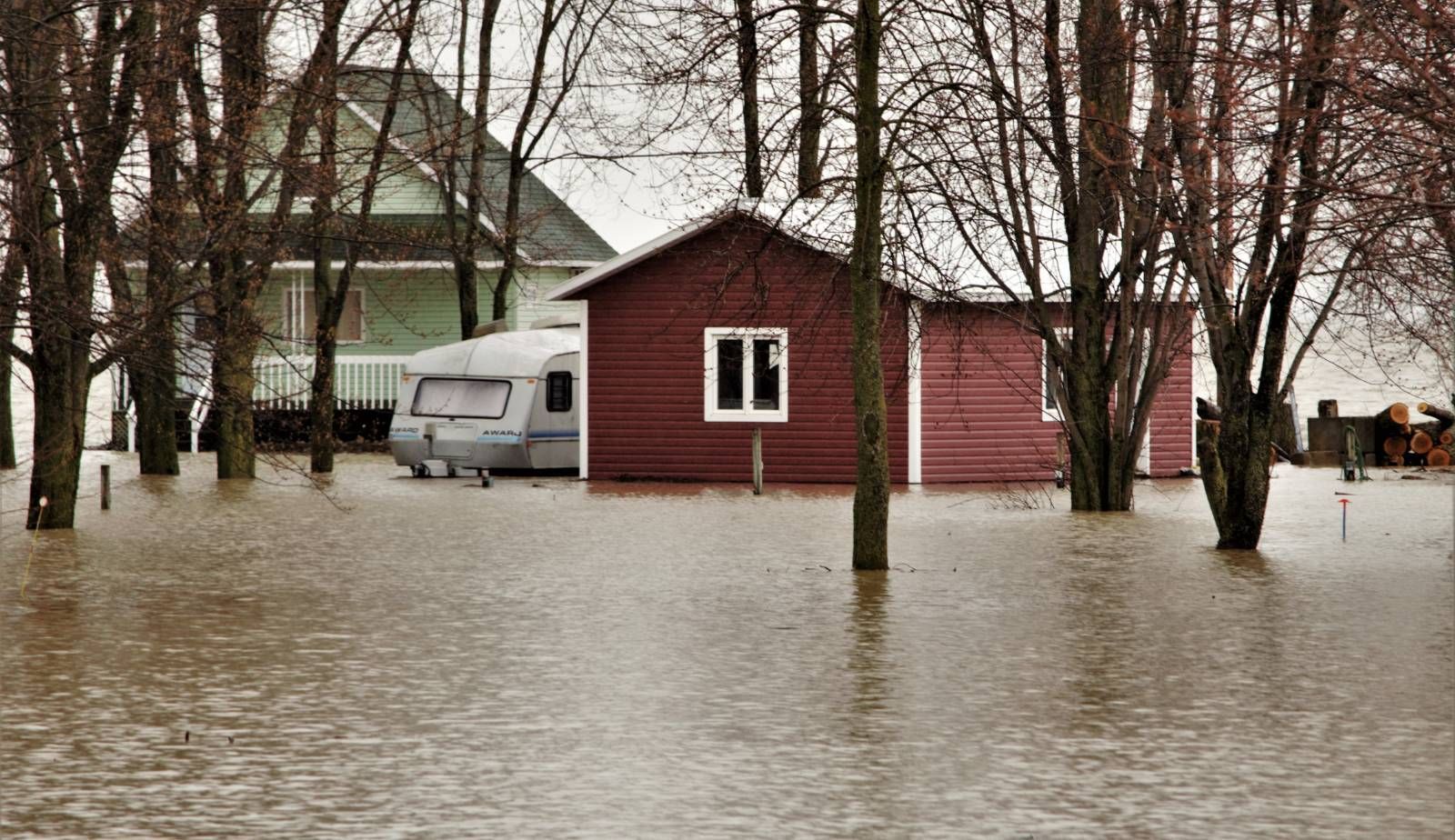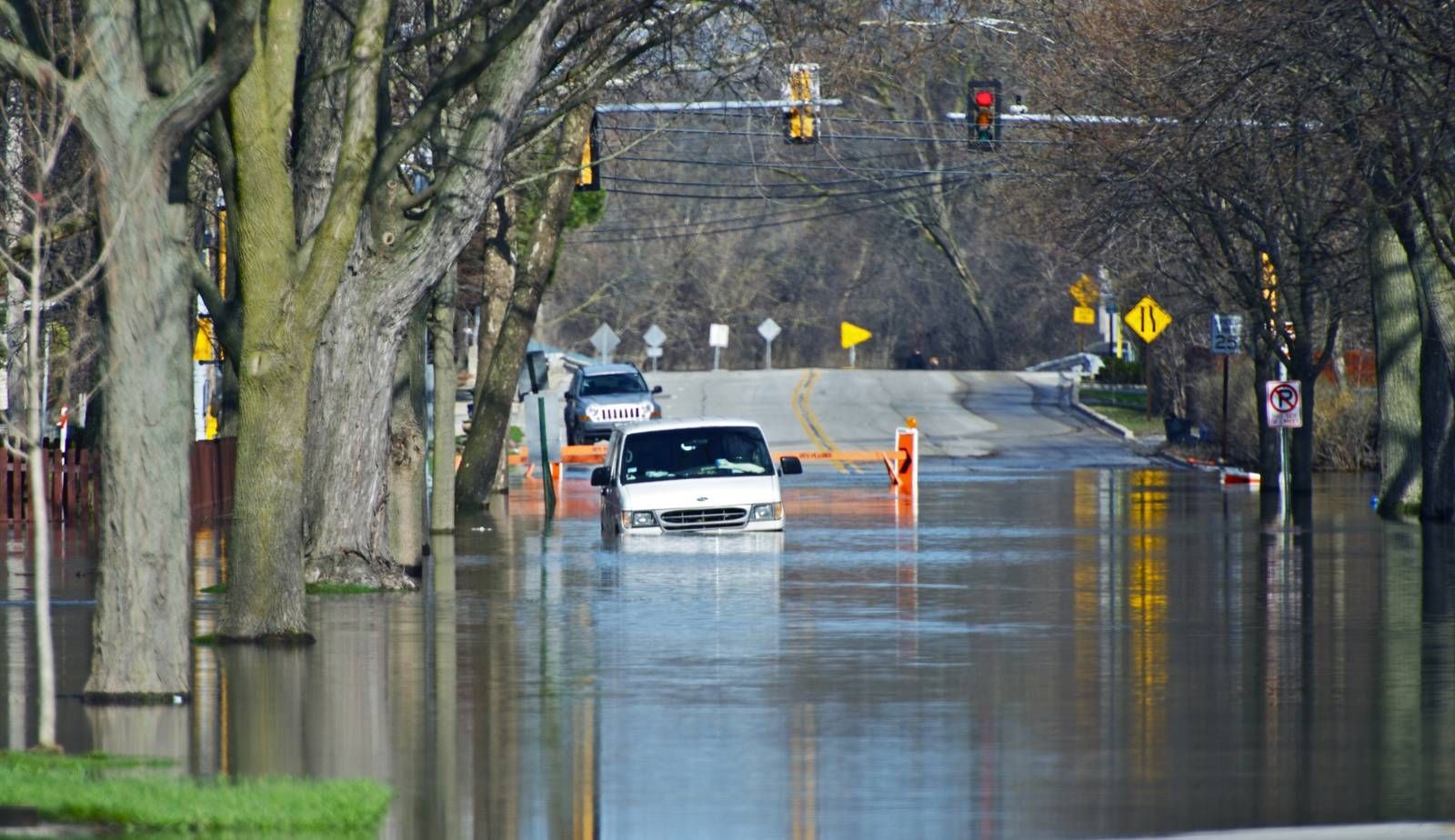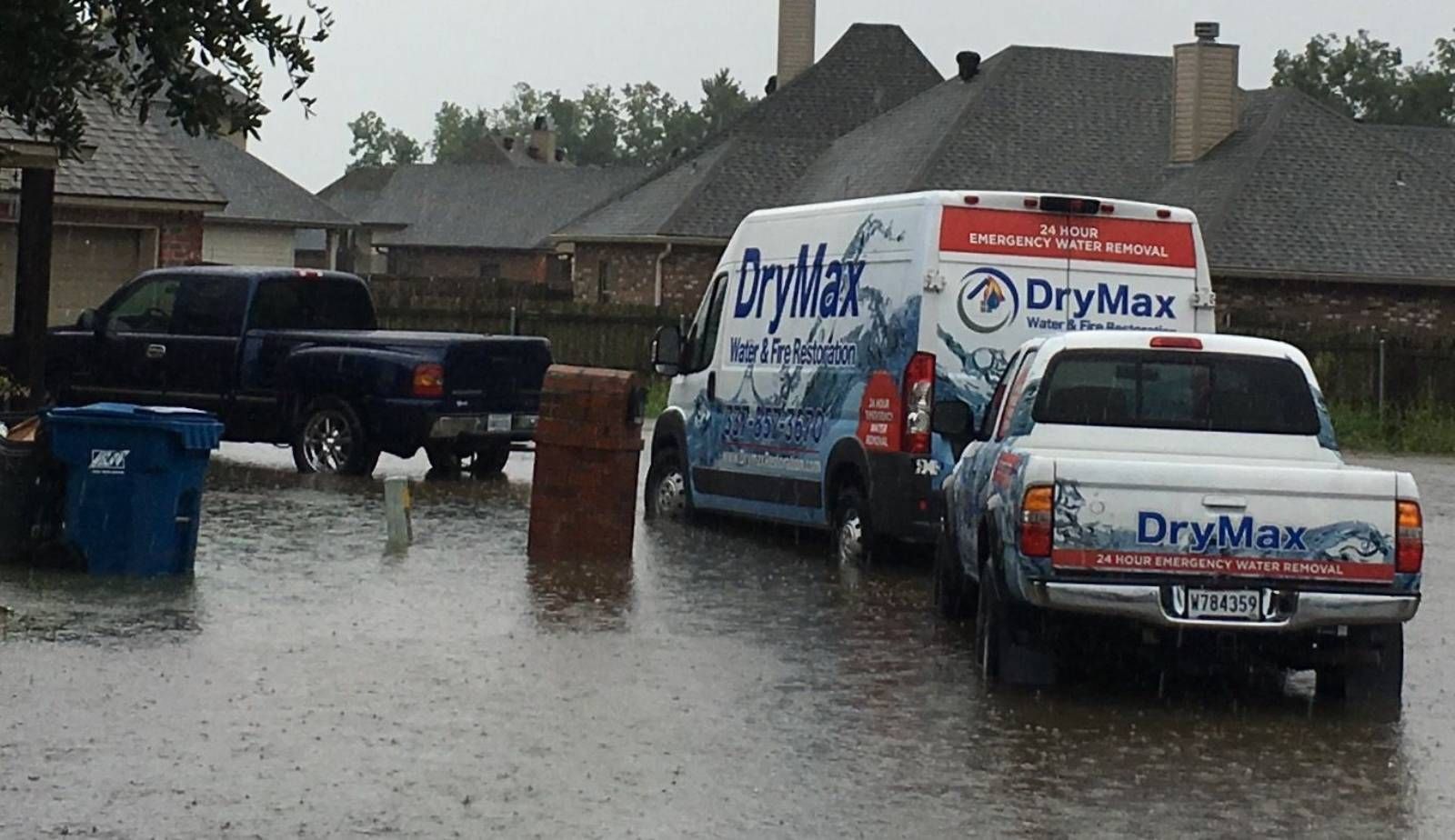Storm Aftermath: Essential Information for Louisiana Homeowners on Floodwater Contamination and the Dangers of Category 3 Black Water
Louisiana homeowners face significant risks in the aftermath of storms, particularly when floodwaters enter their properties. Category 3 black water, which includes sewage and hazardous waste, poses severe health threats due to its high level of contamination. Understanding these dangers is crucial for ensuring safety and preventing long-term damage to both health and property.
The aftermath of flooding can lead to exposure to harmful bacteria, viruses, and other pathogens that thrive in contaminated water. Individuals may encounter skin irritations, respiratory issues, or more severe infections if proper precautions are not taken. This highlights the need for immediate and professional cleanup to mitigate these risks effectively.
Homeowners should prioritize calling in experts who are trained in handling hazardous materials. Attempting to clean up Category 3 water without proper gear and knowledge can have dangerous consequences. Engaging professionals ensures safe removal and thorough sanitation, protecting both the home and its occupants from potential health hazards.
Understanding Floodwater Contamination in Louisiana
Flooding in Louisiana can introduce various contaminants into homes, significantly affecting health and safety. Homeowners must recognize the primary causes of flood-related contamination and understand how these harmful substances can infiltrate their living spaces.
Common Causes of Storm-Related Flooding
Storm-related flooding in Louisiana is often driven by intense rainfall, hurricanes, and excessive runoff. The state’s low-lying topography and vulnerable infrastructure can exacerbate these conditions.
Key contributors include:
- Heavy Rainfall: Sudden storms can overwhelm drainage systems, leading to flooding.
- Hurricanes: Coastal storms can bring storm surges that inundate homes and neighborhoods.
- Levee Failures: Structural failures can release large volumes of water into populated areas.
These factors contribute to uncontrolled water flow, increasing the risk of contaminants entering homes after the storm.
How Contaminants Enter Home Environments
Floodwater often contains pollutants such as chemicals, sewage, and pathogens, classifying it as "Category 3" black water. This type of water poses significant health risks, including gastrointestinal illnesses and infections.
Contaminants may enter homes through:
- Structural Damage: Floodwater can breach walls, foundations, and roofs, allowing contaminated water to seep indoors.
- Direct Contact: Items and surfaces exposed to floodwater may retain harmful substances, impacting health.
- Groundwater Rise: Heavy flooding can elevate groundwater levels, introducing contaminants from nearby land.
Residents should be acutely aware of these risks and prioritize professional cleanup to minimize exposure to harmful substances.
Defining Category 3 Black Water
Category 3 black water is recognized as the most hazardous category of water damage, arising from highly contaminated sources. Understanding its qualifications and signs is vital for homeowners, especially following flooding incidents.
What Qualifies as Category 3 Water Damage
Category 3 water damage is defined by significantly unsanitary water that contains harmful pathogens, toxins, and other hazardous substances. This type of water typically originates from sources such as:
- Sewage backups: When wastewater overflows, it introduces harmful bacteria.
- Floodwaters: Water from heavy rains or rising rivers can carry contaminants from various locations.
- Toilet overflows: Particularly those involving feces, which pose serious health risks.
Exposure to such water can lead to serious health complications, including gastrointestinal infections and other diseases. Hence, immediate assessment and professional remediation are essential.
Visual and Odor Indicators of Black Water
Identifying black water involves recognizing specific visual and olfactory cues. Homeowners should look for:
- Color: Black water often appears dark brown or black due to the presence of sewage.
- Debris: Visible particles or organic matter might indicate contamination.
- Odor: A foul smell often accompanies black water, primarily due to decaying materials.
Additionally, if water has been stagnant, it may exhibit microbial growth, further signaling contamination. Recognizing these indicators can prompt timely action to mitigate health risks.
Health Risks Associated With Floodwater Exposure
Floodwater contains numerous health risks that homeowners need to understand. The potential for exposure to harmful pathogens and chemicals is significant. Individuals, especially vulnerable populations, face various short-term and long-term health effects.
Potential Pathogens and Chemical Hazards
Floodwaters can contain pathogens from contaminated sources, including sewage, chemicals, and other hazardous materials. The risk of illness increases significantly when water is classified as “Category 3” black water, which is highly contaminated.
Common pathogens include:
- Bacteria such as E. coli and Salmonella
- Viruses including Hepatitis A and Norovirus
- Parasites like Giardia
In addition to biological hazards, floodwaters may hold chemical contaminants from submerged vehicles, industrial sites, and agricultural areas. Pollutants may cause respiratory issues or skin irritations upon contact.
Short-Term and Long-Term Health Effects
Short-term health effects from floodwater exposure can include:
- Gastrointestinal illnesses
- Skin infections
- Respiratory problems due to mold exposure
These conditions may appear within days of exposure.
Long-term effects may develop from prolonged exposure or when contaminated materials remain in the home. Chronic health issues can surface, such as persistent respiratory conditions, allergies, and autoimmune responses triggered by mold or bacteria. It is imperative for affected individuals to address these risks promptly.
Vulnerable Populations in the Home
Certain groups face higher risks during flood events. Vulnerable populations include:
- Children: Their immune systems are still developing, making them more susceptible to infections.
- Elderly individuals: They often have pre-existing health conditions that can be exacerbated by exposure.
- Pregnant women: They may be at risk of complications from infections or exposures.
Homeowners should take extra precautions to protect these individuals, including ensuring that any cleanup following flooding is conducted by professionals equipped to handle contaminated materials safely.

The Importance of Professional Cleanup After Category 3 Flooding
Category 3 floodwater, often called black water, poses severe health risks due to its high contamination levels. Professional cleanup is essential to ensure safety and effective remediation. This process goes beyond basic cleaning and requires specialized knowledge, equipment, and protocols.
Why DIY Cleaning Is Not Safe
Attempting to clean up black water without professional assistance can lead to serious health hazards. Floodwaters often contain pathogens, bacteria, and toxic substances, increasing the risk of illness.
Key Risks Include:
- Pathogenic Exposure: Contact with contaminated water can lead to infections.
- Toxic Chemicals: Many floods may involve chemicals from industrial areas.
- Hidden Dangers: Debris or sharp objects may be embedded in the water.
Professionals are trained to safely handle these risks with the correct personal protective equipment (PPE) and sanitation procedures. Furthermore, improper cleanup can leave harmful residues, leading to long-term health issues.
Industry Standards for Remediation
The remediation of Category 3 flooding must follow industry standards to guarantee safe and effective outcomes.
Essential Steps Include:
- Assessment: Professionals evaluate the extent of contamination and damage.
- Containment: Areas are contained to prevent spread during cleaning.
- Removal: Contaminated materials, including drywall and carpeting, are safely removed.
- Disinfection: Surfaces are sanitized to eliminate pathogens.
- Drying: Proper drying techniques are applied to prevent mold growth.
Certified technicians adhere to guidelines from organizations like the Institute of Inspection, Cleaning and Restoration Certification (IICRC). Their expertise ensures that the property is restored to a safe condition, minimizing health risks for occupants.
Steps Homeowners Should Take Immediately After Flooding
In the wake of flooding, acting quickly and safely is crucial. Homeowners must focus on personal safety, proper documentation for insurance claims, and preventing further contamination of their property.
Personal Safety Precautions
Before re-entering a flood-affected area, it is essential to wait for clearance from local authorities. This ensures the area is safe from hazards such as unstable structures or lingering floodwaters.
Once inside, homeowners should wear protective gear including gloves, boots, and masks. This is particularly important in areas where “Category 3” black water is present, as it may contain harmful pathogens.
Avoid touching electrical equipment until it is confirmed safe. Turn off power to affected areas if not already done so.
Assess the surroundings carefully and watch for signs of hidden dangers like sharp debris or hazardous materials. It is also wise to avoid wading through floodwaters if possible.
Documenting Damage for Insurance Purposes
Accurate documentation is crucial for a successful insurance claim. Homeowners should take detailed photographs and videos of all affected areas, including walls, flooring, and personal belongings.
Create a comprehensive list of damaged items, including their estimated value and purchase dates. This will aid insurance adjusters in assessing the claim.
Make sure to capture the extent of flooding by noting water levels, as this can support the claim regarding the severity of the flooding.
Store all documentation in a safe location, either digitally or physically, to ensure accessibility throughout the claims process.
Preventing Further Contamination
After a flood, immediate actions are necessary to minimize contamination risks. Begin by removing any standing water using pumps or mops, depending on the severity.
Clean and disinfect all surfaces that have come into contact with floodwaters. Use a mixture of water and household bleach, following manufacturer instructions for safe use.
Address damaged materials promptly. Remove wet carpets, drywall, and insulation, as they can harbor mold and bacteria. Dispose of these materials properly to prevent further contamination.
Ensure proper ventilation in the home to aid in drying out the property. Open windows and doors where possible to improve air circulation. A dehumidifier may also be beneficial.
Following these steps will help homeowners manage the aftermath of flooding more effectively.

How Drymax Supports Louisiana Homeowners
Drymax provides essential support for homeowners facing the aftermath of storm-related flooding. Their specialized techniques and extensive experience in handling local storm events ensure both safety and effective recovery.
Specialized Cleanup Techniques
Drymax employs a range of specialized cleanup techniques designed to address the contamination risks associated with floodwater. In cases involving Category 3 black water, contamination can pose serious health risks.
Their trained professionals use personal protective equipment (PPE) to ensure safety while removing contaminated materials. Advanced drying technology such as high-capacity air movers and dehumidifiers helps eliminate moisture that can lead to mold growth.
Additionally, Drymax uses environmentally friendly disinfectants to sanitize affected areas. This step is crucial to mitigate health hazards, as floodwaters can contain harmful bacteria and chemicals. Their approach combines thoroughness and safety, leading to a more effective restoration process.
Experience With Local Storm Events
Drymax's experience with local storm events equips them to understand specific challenges Louisiana homeowners face post-disaster. They are well-versed in the unique weather patterns and flooding issues prevalent in the region.
With this understanding, Drymax offers tailored solutions that take into account property types and local codes. Their familiarity with the local landscape aids in efficient damage assessment and remediation.
Moreover, Drymax collaborates with local insurance providers to facilitate claims processing, alleviating additional stress for homeowners. Their goal is to offer comprehensive recovery solutions that address both immediate and long-term needs following severe weather incidents.
Preventative Measures for Future Flooding Events
To safeguard homes against future flooding events, homeowners can implement specific strategies that enhance resilience and promote upkeep. These measures can significantly mitigate risks associated with floodwater infiltration.
Improving Home Resilience to Floodwater
Homeowners should consider reinforcing their properties with flood-resistant materials. This can include:
- Elevating electrical systems: Raising systems above potential flood levels reduces the risk of damage.
- Using flood-resistant insulation: Options like spray foam insulation not only resist flood damage but also improve energy efficiency.
- Installing backflow valves: These devices prevent sewage from entering the home during heavy rains.
Additionally, homeowners can benefit from landscaping techniques such as creating swales, which redirect water away from the foundation. Grading the yard to slope away can also help mitigate flooding impacts. Lastly, securing flood vents in crawl spaces allows floodwater to flow freely, reducing pressure on walls.
Routine Maintenance and Inspections
Regular maintenance and inspections play a critical role in flood preparedness. Homeowners are advised to:
- Inspect gutters and drains: Clean and check for obstructions to ensure proper water flow.
- Seal openings in the foundation: Caulking or using sealants prevents water from penetrating.
- Review the sump pump: Ensure the pump is operational and test it regularly.
It's vital to check the roof for missing shingles or leaks, as these can lead to additional water intrusion. Scheduling annual inspections with professionals can offer insights into any vulnerabilities, helping homeowners stay ahead of potential flood risks. Regular maintenance fosters a proactive approach to flood preparedness.

Frequently Asked Questions
Homeowners affected by floodwater contamination often have pressing concerns regarding health risks, the necessity of professional cleanup, and the impact on their properties. Understanding these aspects can help them navigate the aftermath of a storm more effectively.
What are the health risks associated with floodwater contamination in homes?
Category 3 black water, which includes sewage and contaminated water, poses significant health risks. Exposure can lead to gastrointestinal illnesses, skin infections, and respiratory issues. It is crucial to avoid contact with contaminated water to reduce these health threats.
Why is it important to have professionals handle the cleanup of Category 3 black water?
Professionals are trained to manage hazardous materials safely. They employ specialized equipment and techniques to mitigate health risks. Their expertise ensures thorough removal of contaminated materials, reducing the chance of residual health hazards.
What precautions should homeowners take when dealing with floodwater contamination?
Homeowners should avoid entering areas affected by floodwater without proper protective gear. Wearing gloves, masks, and waterproof boots is essential. Additionally, homeowners should document damage and notify their insurance company promptly.
Can floodwater contamination affect drinking water, and how can this be treated?
Yes, floodwater can compromise drinking water supplies. Contaminants can seep into wells or municipal systems. Treating contaminated water typically involves boiling it or using water purification techniques to eliminate pathogens.
What are the long-term effects of floodwater contamination on residential property?
Long-term effects can include structural damage, mold growth, and decreased property value. The presence of contaminants may lead to lingering odors and health hazards. Addressing these issues promptly is crucial to prevent ongoing damage.
How can homeowners identify the type of water contamination following a storm?
Homeowners can identify water contamination by observing its source and clarity. Black water generally appears dark and discolored, often accompanied by an unpleasant odor. Consulting with professionals can provide definitive identification and guidance on next steps.
You might also like
DryMax Restoration Blogs




